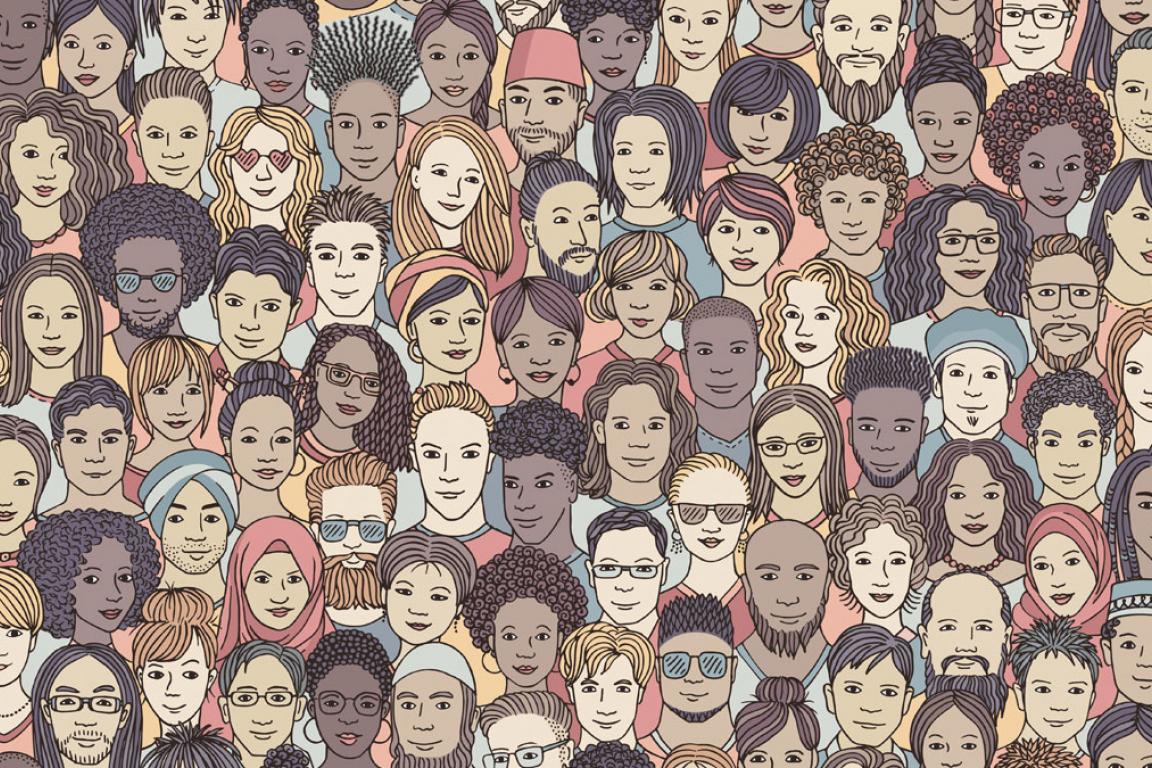We are heartbroken and anguished by recent events.
As Smithsonian Institution Secretary Lonnie Bunch III stated, “Once again, we struggle to make sense of the senseless. Once again, we bear witness to our country’s troubled history of racial violence, from Freddie Gray and Eric Garner to Sandra Bland and Trayvon Martin. Once again, we try to cope as best as we can, whether suffering in silence, participating in protests, or engaging in conversations that evoke all of our emotions.”
In these uncertain times, we are here to listen, support one another, and create a space for these conversations.
Cooper Hewitt is committed to building a culture of belonging by fostering diversity and inclusion among our staff, expanding our collections, and presenting exhibitions and programs that reflect the communities we serve.
To that end, we are sharing resources drawn from Cooper Hewitt and the larger Smithsonian Institution that inspire empathy, understanding, and dialogue. We hope that you will find them useful in this difficult moment.
Best,

John Davis
Interim Director
Talking about Race
Talking about race, although hard, is necessary. With this resource created by our colleagues at the National Museum of African American History and Culture, discover tools and guidance to empower your journey and inspire conversation.
Vernaculars of Queer and Black Remembering
As part of the Willi Smith Community Archive launched on the occasion of Cooper Hewitt’s exhibition Willi Smith: Street Couture, writer and critic Eric Darnell Pritchard explores the ways Black and LGBTQ political figures and creatives have remembered designer Willi Smith (American, 1948–1987).
Americans Dialogue Toolkit
This toolkit created by the National Museum of the American Indian provides basic grounding in the practice of dialogue, and includes three 60-minute models (focused on grades 4–12) that educators can use to facilitate dialogue with students. Through the intentional use of dialogue, educators can facilitate new conversations with and among students about the power of images and words, the challenges of memory, and the relationship between personal and national values.
Collective Memory: Storytelling in the Writing of History
What role does memory play in recording and reflecting upon history? How can recording practices illuminate shifts around our expectation of truth, help to dismantle accepted and exclusionary histories, and serve as public advocacy? Join Cooper Hewitt as we explore these questions in light of the exhibition Willi Smith: Street Couture, for which recollection and storytelling were integral to the shaping of the exhibition.
The conversation will be moderated by Eric Darnell Pritchard, author and Associate Professor of English at the University at Buffalo, with panelists including Steven G. Fullwood, Archivist and Co-founder of the Nomadic Archivists Project, Uzodinma Iweala, author and CEO of the Africa Center, and Kelly Elaine Navies, Museum Specialist in Oral History for the Smithsonian National Museum of African American History and Culture (NMAAHC).
#MomentsOfResilience
As the world grapples with Covid-19, communities are marching in the streets to express their displeasure and frustration at our country’s inability to deal with our racial inequalities. What started as protests against the killing of George Floyd at the hands of the Minneapolis police has quickly grown to represent the continued senseless killing of African Americans. As the list grows, so does the call for justice and equality for all people.
The Anacostia Community Museum believes in amplifying the collective power of community and currently, that collective power is its ability to care for and comfort each other in times of need. Whether you are dealing with Covid-19 or the racial unrest gripping our country, the Anacostia Community Museum wants to hear your story.
Looking for Design
“Looking for Design” is a blog series exploring the work of Black and Latinx designers in the collections of the National Museum of African American History and Culture (NMAAHC) and Cooper Hewitt.
The series was written by Maeve Coudrelle, summer 2017 Latino Museum Studies Program Fellow, in consultation with Michelle Joan Wilkinson at NMAAHC and Christina de León at Cooper Hewitt, Smithsonian Design Museum.
Standing Together Against Xenophobia
This toolkit created by the Smithsonian Asian Pacific American Center provides basic grounding in the practice of dialogue, and includes three 60-minute models (focused on grades 4–12) that educators can use in the Americans exhibition to facilitate dialogue with students. Through the intentional use of dialogue, educators can tap into the Americans material to facilitate new conversations with and among students about the power of images and words, the challenges of memory, and the relationship between personal and national values.
Lead image: Illustration by Franzi Paetzold
